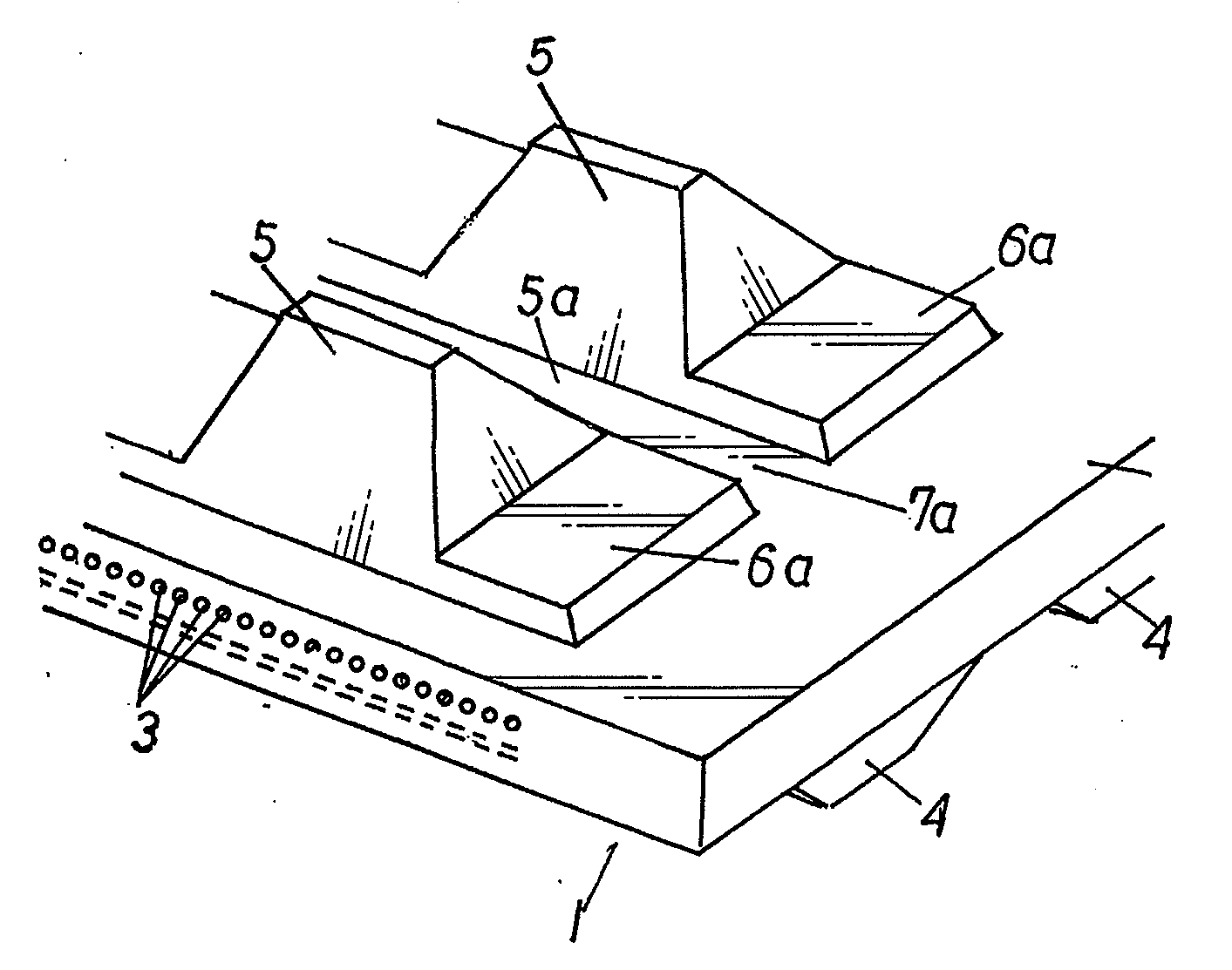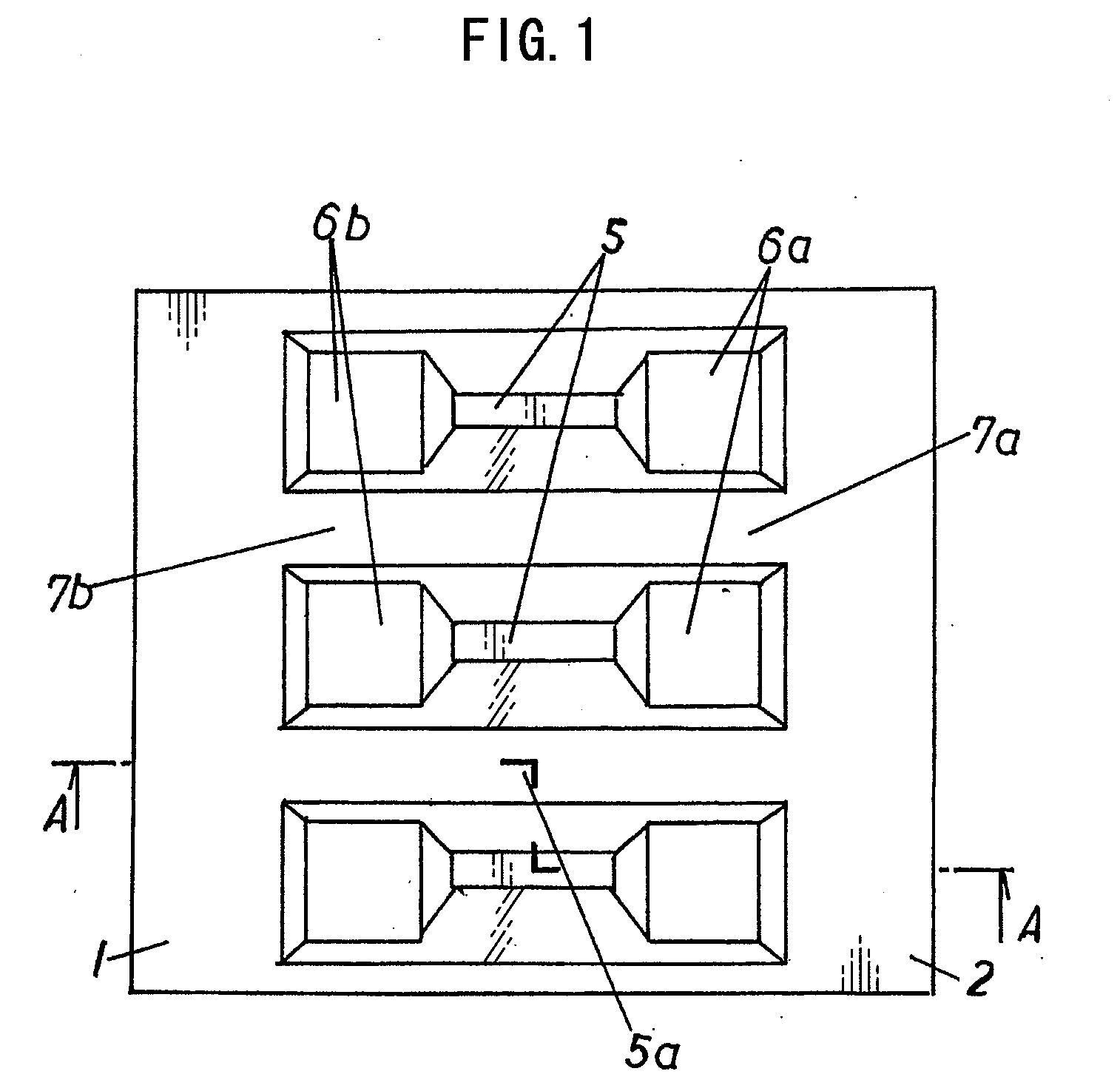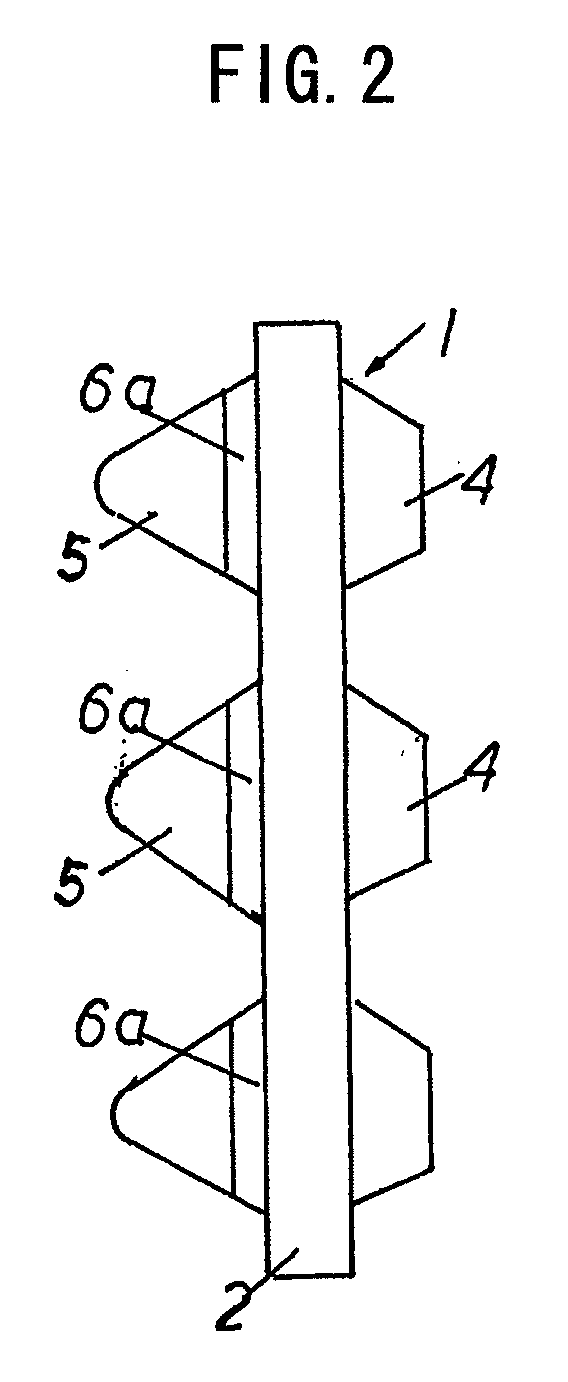Coreless rubber crawler and traveling device
a technology of traveling device and crawler, which is applied in the direction of endless track vehicles, mechanical devices, transportation and packaging, etc., can solve the problems of reducing the life of the crawler, affecting the performance of the crawler, so as to reduce the damage to the rubber protrusion, reduce the surface pressure, and reduce the damage
- Summary
- Abstract
- Description
- Claims
- Application Information
AI Technical Summary
Benefits of technology
Problems solved by technology
Method used
Image
Examples
Embodiment Construction
[0023]Hereinafter, an embodiment of the present invention will be described in further detail by way of the drawings. FIG. 1 is a plan view of an inner circumferential side of the coreless rubber crawler of the first aspect of the present invention, FIG. 2 is a side view, FIG. 3 is a cross-sectional view along a line A-A in FIG. 1, and FIG. 4 is a perspective view. In the drawings, reference numeral 1 indicates a coreless rubber crawler, and the coreless rubber crawler is continuous in the up-down direction of the page in FIG. 1 with an endless rubber elastic body 2 serving as a substrate. Reference numeral 3 indicates steel cords serving as a tensile material buried in the rubber elastic body 2 in the longitudinal direction thereof. Further, lugs 4 are formed at an outer circumferential surface of the rubber elastic body 2, and rubber protrusions 5 are formed at the center of the inner circumferential surface at a constant pitch. At the left and right of the rubber protrusions 5 in...
PUM
 Login to View More
Login to View More Abstract
Description
Claims
Application Information
 Login to View More
Login to View More - R&D
- Intellectual Property
- Life Sciences
- Materials
- Tech Scout
- Unparalleled Data Quality
- Higher Quality Content
- 60% Fewer Hallucinations
Browse by: Latest US Patents, China's latest patents, Technical Efficacy Thesaurus, Application Domain, Technology Topic, Popular Technical Reports.
© 2025 PatSnap. All rights reserved.Legal|Privacy policy|Modern Slavery Act Transparency Statement|Sitemap|About US| Contact US: help@patsnap.com



